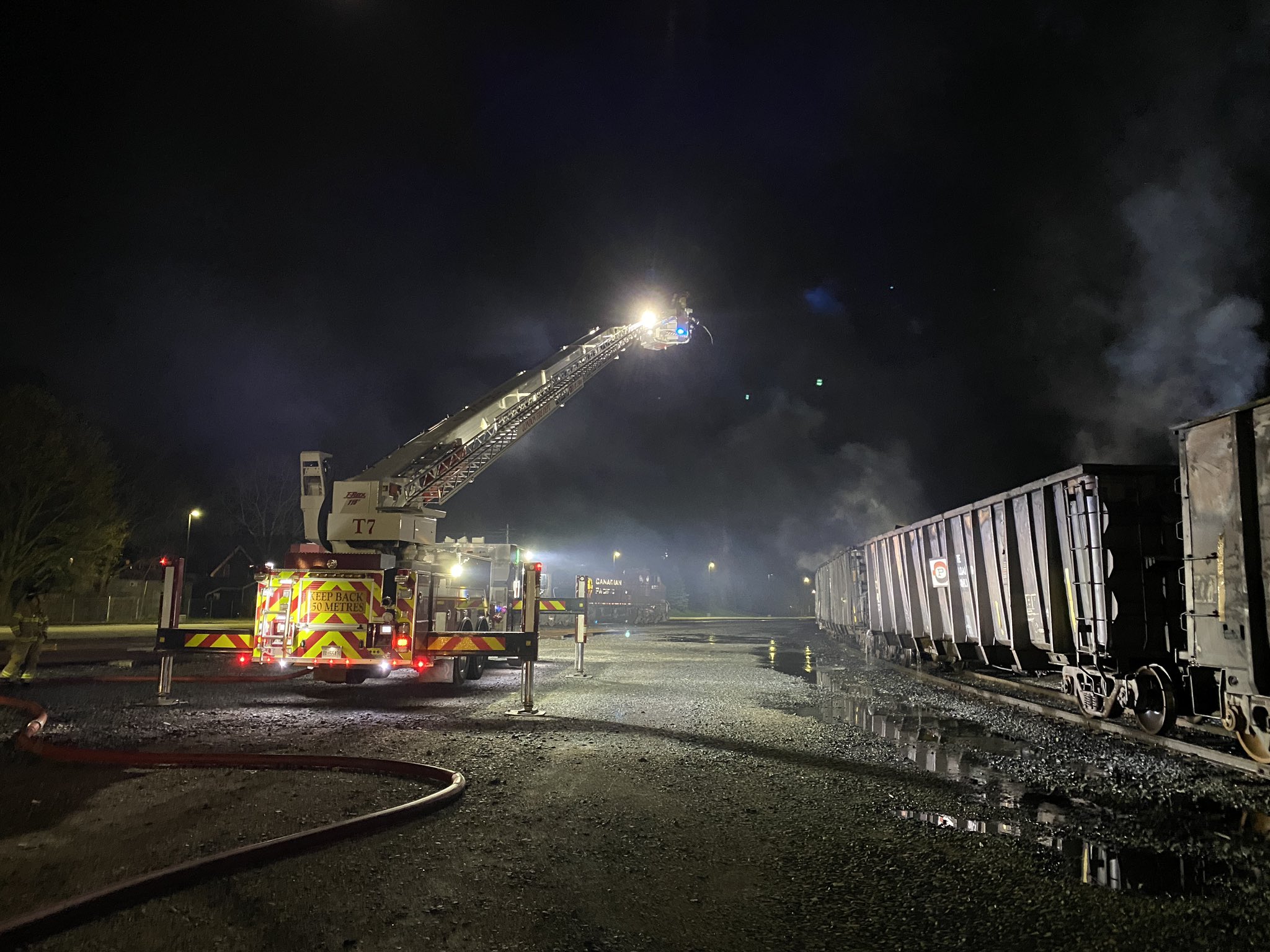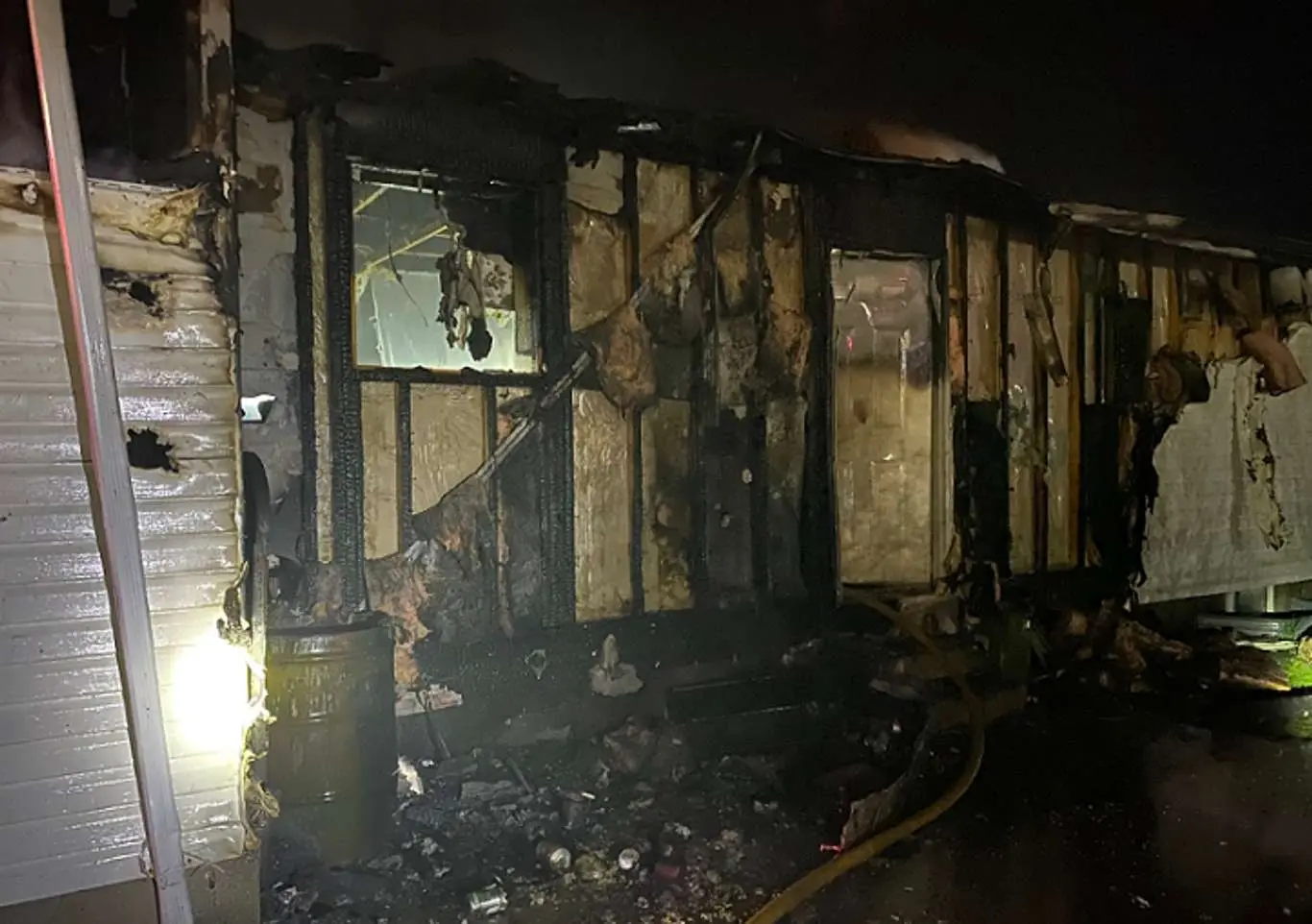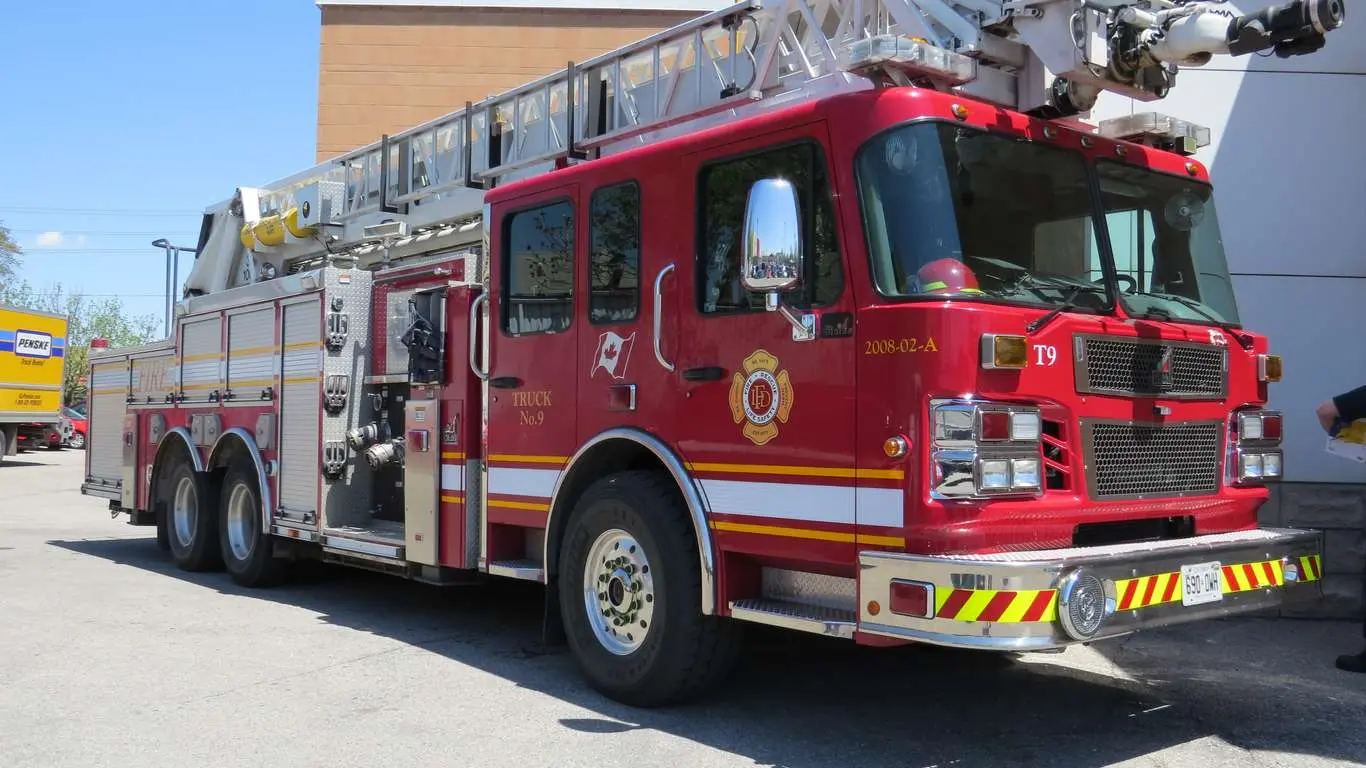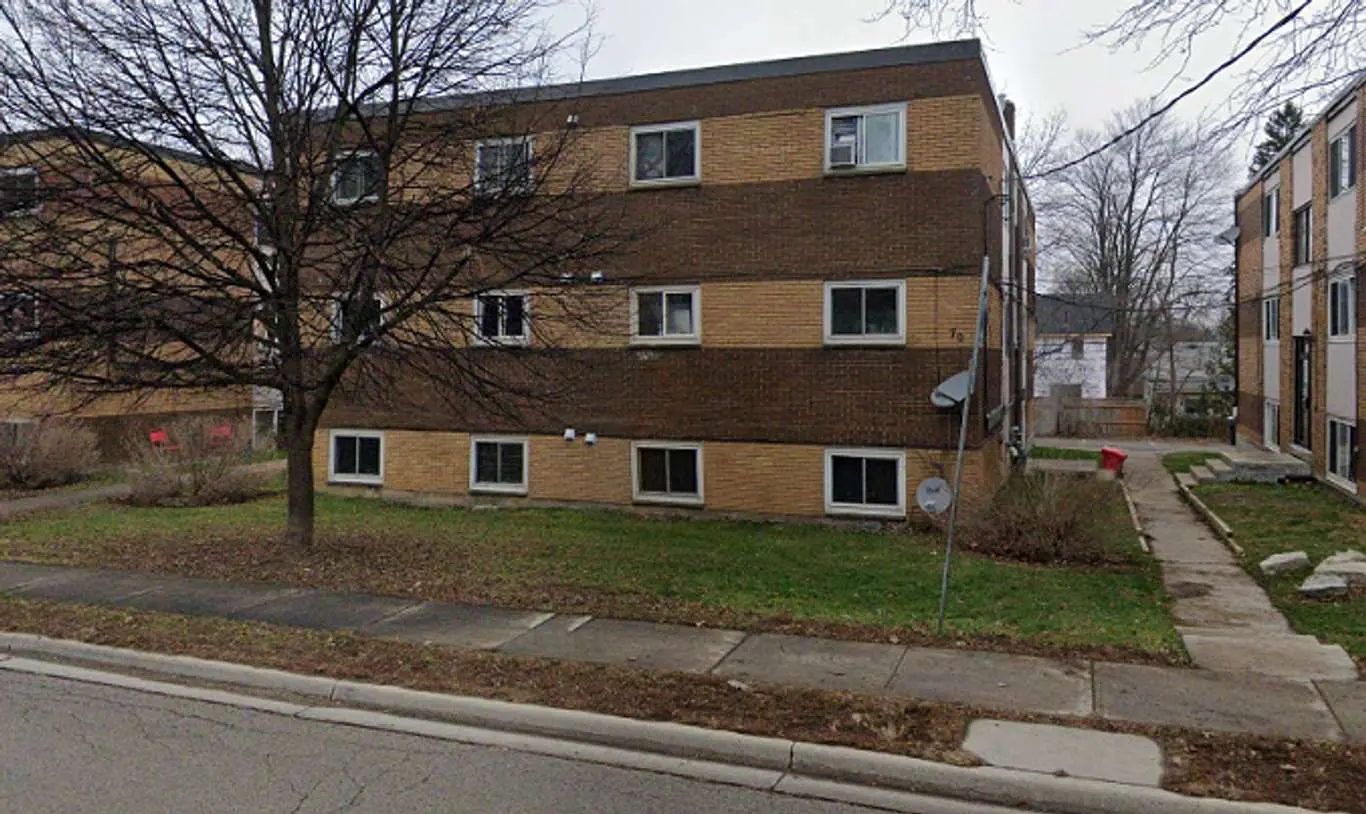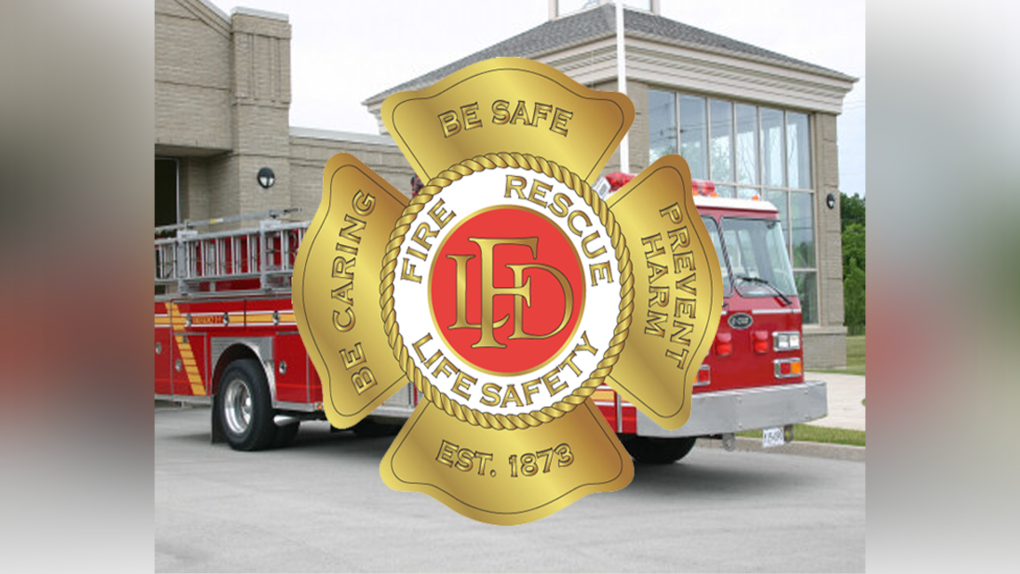First, a suspected arson hit the place while they slept.
Now, six weeks later, firefighters say residents of a small London apartment house are lucky to be alive after yet another early-morning fire tore through their building just before dawn, a close call at a time when fires are deadliest.
The blaze sent five people to hospital – three with smoke inhalation, one with burns and one with cuts.
The tenants, including at least two students, were jolted from their sleep just before 6 a.m. Friday and found the place ablaze.
“I woke up to the smell of smoke and I could hear a smoke alarm, but it wasn’t ours,” said Jennifer Kent, a journalism student at the University of Western Ontario, who lives in a rear ground-floor apartment.
Kent said she and her roommate grabbed their coats and called 911, but the smoke became so heavy so quickly “we couldn’t even find our shoes and just ran outside.”
Neighbour Karly Lestins awoke to the sounds of screaming from across the street.
“It was the biggest fire I’ve ever seen and I ran out in my housecoat and called 911,” she said.
Lestins helped the dazed occupants – now homeless, including some who lost everything – as they fled the smoke and flames.
“Their whole faces were black, their eyes, their arms and everything,” she said. “It was really sad and scary.”
Unlike the first fire, which spooked the residents and caused only about $1,000 damage, mainly in a stairwell, the latest blaze – which police say isn’t suspicious – left about $350,000 damage and spread throughout the older, three-unit building on Blackfriars St.
The close call underlines how rapidly fires can move and menace people while they’re asleep, fire officials said.
“Most fatal fires occur when people are sleeping,” said the London fire department’s Rick Jefferson, adding smoke doesn’t wake people up.
“It can actually put you into a deeper sleep as you take in carbon monoxide,” he said.
Firefighters found multiple people trapped on the lower roof of the two-storey house, just as they did weeks ago during the first fire.
Firefighters used a ladder to rescue them, said district fire chief Daryl Stephenson.
The Canadian Red Cross is putting up the burned-out tenants for three nights in hotel rooms until they can get back on their feet.
Kent and others were able to retrieve some clothing, their water-damaged laptops and purses, but little else.
Their landlord – “the best in the world” – has already found the roommates a new apartment and, perhaps, some furniture, Kent said.
Blackfriars bridge was closed for several hours, as the morning commuter-rush began, while firefighters battled the blaze.
The flames raced quickly through the building, Stephenson said.
“When the first engine company arrived on scene, they noticed the flames coming out the front door up to the second floor,” he said.
“The fire was just trying to find a way out and was travelling up the walls.”
The house had smoke alarms – mandatory in Ontario since 2007 on all floors and outside sleeping areas – and they all worked, said one resident, who didn’t want to be identified.
One of the deadliest fires in London happened in 1989 when six people, including two children, were killed after a fire swept through a Margaret St. home in the city’s east end. Investigating firefighters said a single smoke alarm in the house would have saved lives.
With files by Joe Belanger, Free Press reporter
via The London Free Press.
First, a suspected arson hit the place while they slept.
Now, six weeks later, firefighters say residents of a small London apartment house are lucky to be alive after yet another early-morning fire tore through their building just before dawn, a close call at a time when fires are deadliest.
The blaze sent five people to hospital – three with smoke inhalation, one with burns and one with cuts.
The tenants, including at least two students, were jolted from their sleep just before 6 a.m. Friday and found the place ablaze.
“I woke up to the smell of smoke and I could hear a smoke alarm, but it wasn’t ours,” said Jennifer Kent, a journalism student at the University of Western Ontario, who lives in a rear ground-floor apartment.
Kent said she and her roommate grabbed their coats and called 911, but the smoke became so heavy so quickly “we couldn’t even find our shoes and just ran outside.”
Neighbour Karly Lestins awoke to the sounds of screaming from across the street.
“It was the biggest fire I’ve ever seen and I ran out in my housecoat and called 911,” she said.
Lestins helped the dazed occupants – now homeless, including some who lost everything – as they fled the smoke and flames.
“Their whole faces were black, their eyes, their arms and everything,” she said. “It was really sad and scary.”
Unlike the first fire, which spooked the residents and caused only about $1,000 damage, mainly in a stairwell, the latest blaze – which police say isn’t suspicious – left about $350,000 damage and spread throughout the older, three-unit building on Blackfriars St.
The close call underlines how rapidly fires can move and menace people while they’re asleep, fire officials said.
“Most fatal fires occur when people are sleeping,” said the London fire department’s Rick Jefferson, adding smoke doesn’t wake people up.
“It can actually put you into a deeper sleep as you take in carbon monoxide,” he said.
Firefighters found multiple people trapped on the lower roof of the two-storey house, just as they did weeks ago during the first fire.
Firefighters used a ladder to rescue them, said district fire chief Daryl Stephenson.
The Canadian Red Cross is putting up the burned-out tenants for three nights in hotel rooms until they can get back on their feet.
Kent and others were able to retrieve some clothing, their water-damaged laptops and purses, but little else.
Their landlord – “the best in the world” – has already found the roommates a new apartment and, perhaps, some furniture, Kent said.
Blackfriars bridge was closed for several hours, as the morning commuter-rush began, while firefighters battled the blaze.
The flames raced quickly through the building, Stephenson said.
“When the first engine company arrived on scene, they noticed the flames coming out the front door up to the second floor,” he said.
“The fire was just trying to find a way out and was travelling up the walls.”
The house had smoke alarms – mandatory in Ontario since 2007 on all floors and outside sleeping areas – and they all worked, said one resident, who didn’t want to be identified.
One of the deadliest fires in London happened in 1989 when six people, including two children, were killed after a fire swept through a Margaret St. home in the city’s east end. Investigating firefighters said a single smoke alarm in the house would have saved lives.
With files by Joe Belanger, Free Press reporter
via The London Free Press.

